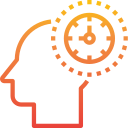A Step-by-Step Body Scan for Beginners
Sit or lie somewhere comfortable, silence notifications, and decide on a short window—five to ten minutes is plenty. Your intention is simple: notice sensations as they are, not as you wish they were.
A Step-by-Step Body Scan for Beginners
Begin by feeling the natural rhythm of breathing at the nostrils, chest, or belly. Each time your mind wanders, gently return to breath, then resume scanning—no scolding, just steady friendliness toward yourself.




